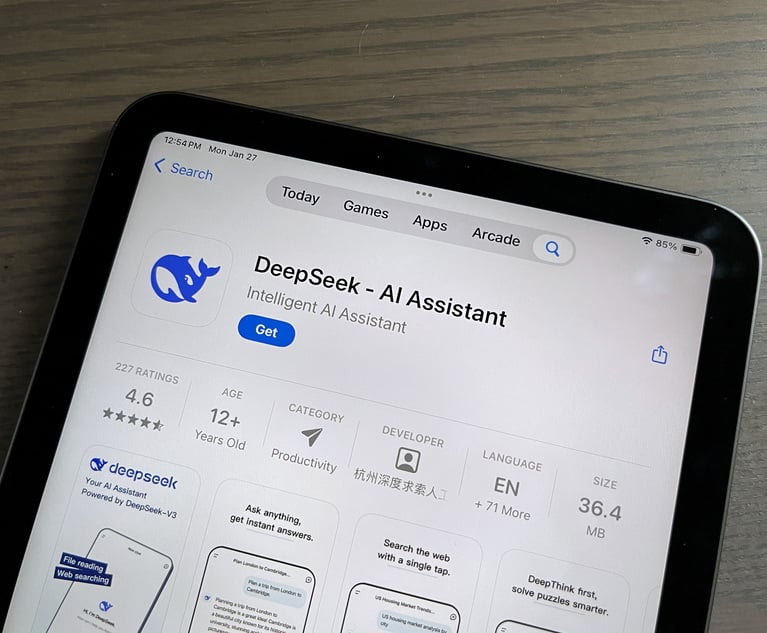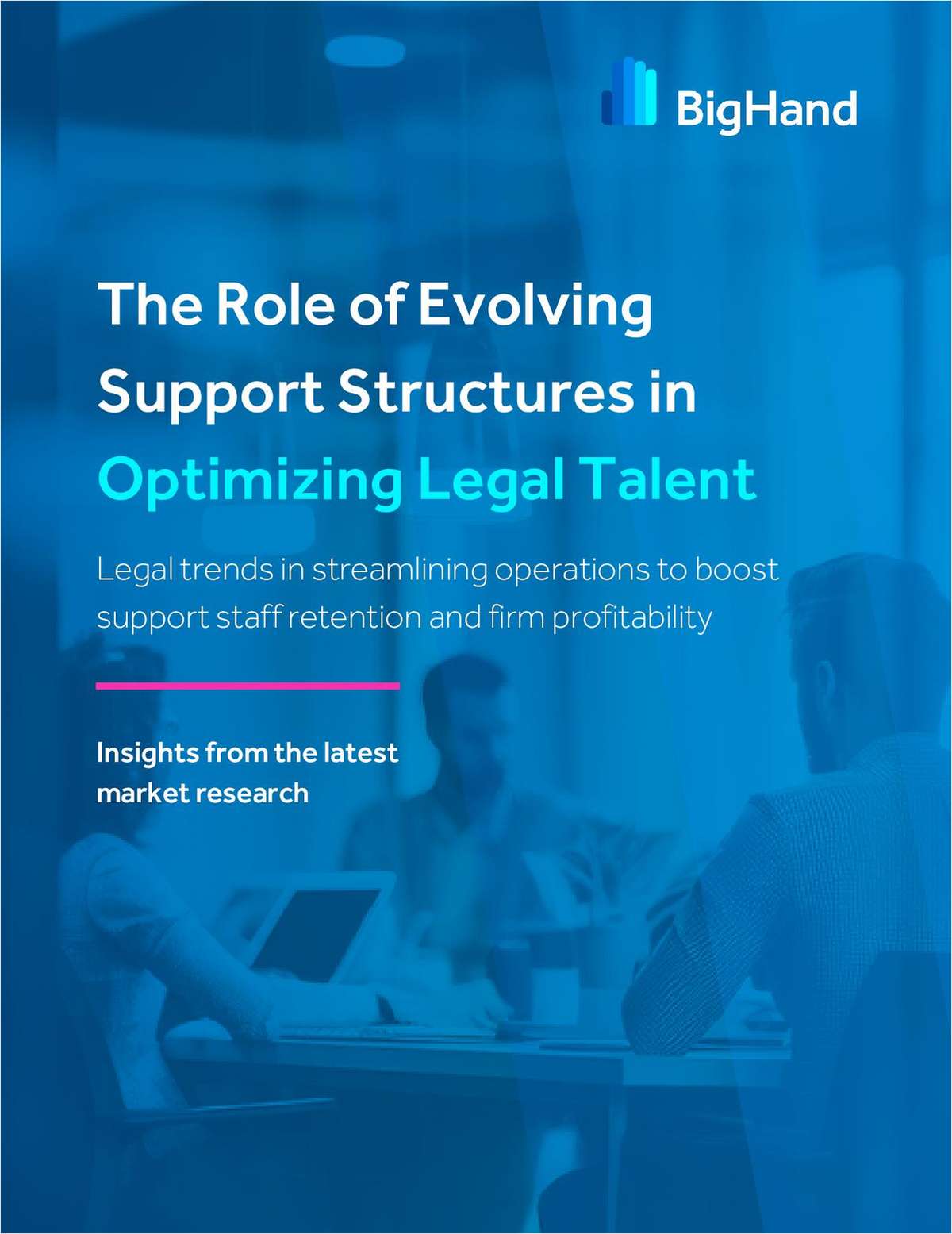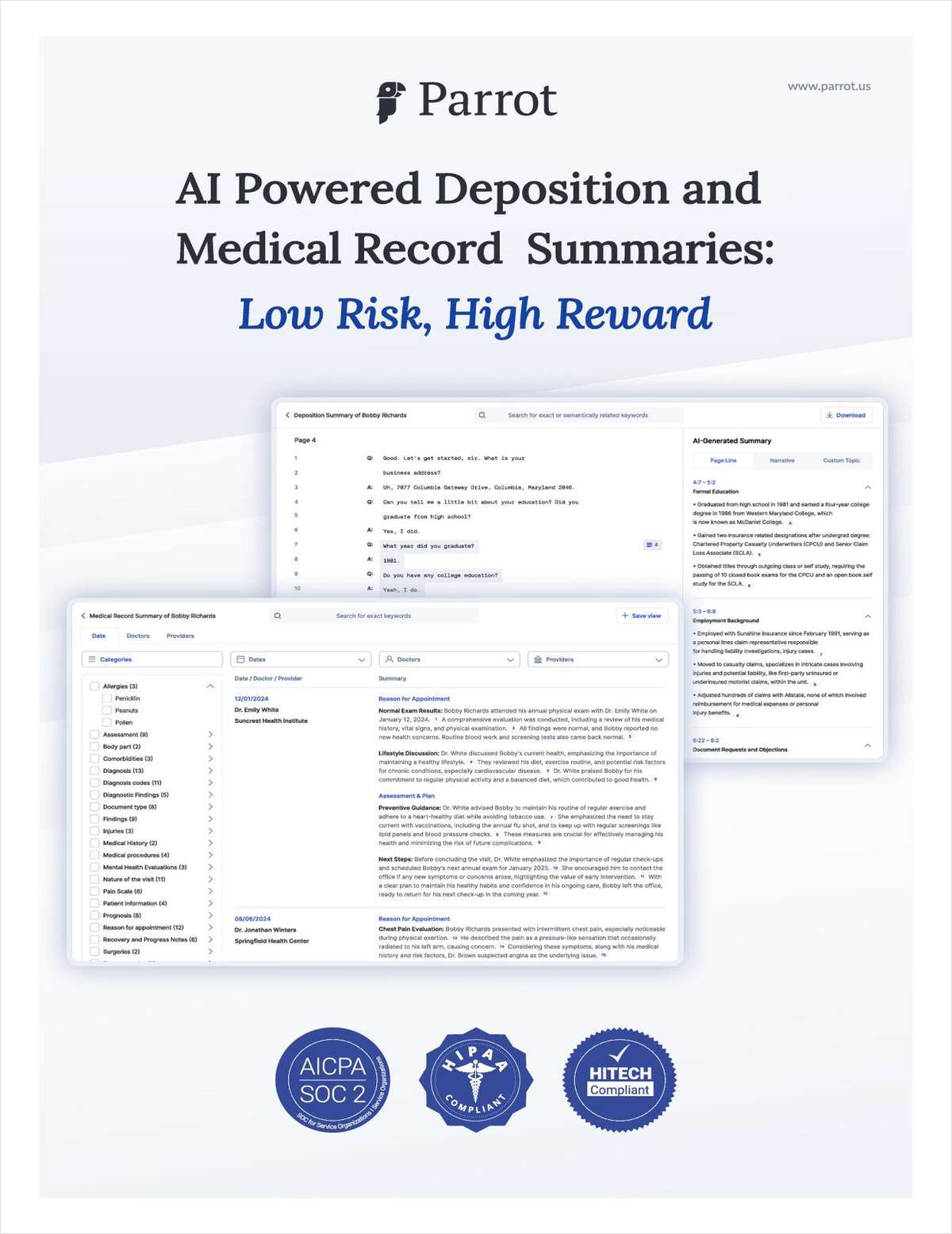At More Than One-Third of the Am Law 100, Minority Partners Are Disproportionately Nonequity
An analysis by The American Lawyer found that big-name firms, including Vinson & Elkins, Goodwin Procter, and Quinn Emanuel, show wide disparities in the percentage of white and minority lawyers in their nonequity partnership tier.
October 21, 2019 at 05:00 AM
8 minute read
The original version of this story was published on The American Lawyer
 Credit: Igor Kisselev/Shutterstock.com
Credit: Igor Kisselev/Shutterstock.com
Minority partners at more than three dozen Am Law 100 firms disproportionately occupy the nonequity tier, according to an analysis by The American Lawyer.
Firms that show a sizeable disparity between the percentage of minority and white equity partners in their ranks say the gap is a byproduct of their recent efforts to build a diverse pipeline—that in time, many of those minority nonequity partners will gain equity status. But diversity advocates say the strikingly higher percentage of minorities in the nonequity tier casts doubt on the progress Big Law has made in bringing minority attorneys into firm leadership.
Using survey data submitted by firms, The American Lawyer analyzed the U.S. partnerships of 148 two-tiered law firms between fiscal years 2014 and 2018—131 of which are in the Am Law 200 and 66 occupying the Am Law 100—and found that minorities are joining the nonequity ranks at three times the rate of their white colleagues.
See also: Minority Partners Disproportionately Placed in Nonequity Partnership Tier
The unbalanced acceleration means that in fiscal 2018, the most recent year for which data is available, an estimated 54% of minority partners were nonequity.
For many of the leading voices in the field pushing for law firm diversity, including Michelle Fang, chief legal officer at alternative rental car company Turo, equity partnership is one of the most important metrics. In January, Fang wrote an open letter signed by more than 200 general counsel demanding increased diversity in the legal profession.
"Equity partners are the ones that have the power at a law firm. Who's being hired, who's getting choice work. They're the ones that control the politics of the firm," she told The American Lawyer at the time.
At some firms, this imbalance is particularly pronounced. At Vinson & Elkins, for example, 68% of the firm's minority partners are nonequity, while only 29% of the firm's white partners are nonequity. The disparity, the difference between the percentage of minority nonequity partners and white nonequity partners at a firm, is 39%—the largest among the Am Law 100 firms.
Even at firms where there are more minority equity partners than nonequity, as is the case at Latham & Watkins, disparities exist. Latham has four more minority equity partners than minority nonequity. But the number of white equity partners is triple the number of white nonequity.
The median disparity among the firms analyzed was 10%. But 34 Am Law 100 firms have disparities that are higher.
In fact, 12 Am Law 100 firms showed a disparity of at least 21%: Vinson & Elkins; Faegre Baker Daniels; Goodwin Procter; Katten Muchin Rosenman; Baker & Hostetler; Crowell & Moring; Fish & Richardson; Quinn Emanuel Urquhart & Sullivan; Jenner & Block; Fenwick & West; Latham & Watkins; and Pillsbury Winthrop Shaw Pittman.
Faegre Baker, Baker & Hostetler, Latham & Watkins, and Fenwick & West did not respond to requests for comment.
Several Am Law 100 firms—Kirkland & Ellis; King & Spalding; Gibson, Dunn & Crutcher; Bryan Cave Leighton Paisner; and Sidley Austin—also have a nonequity partnership tier but were excluded from the analysis because they do not specify whether partners are equity or nonequity in the data they provide annually to The American Lawyer.
Kirkland & Ellis, Sidley Austin, and Gibson Dunn did not respond to a request for comment on why they do not report. King & Spalding declined to comment. A Bryan Cave spokesperson said the nonreporting "has been a long-standing firm policy based on privacy considerations."
Defending the Disparities
Goodwin Procter and Katten Muchin attributed the burgeoning nonequity minority class at their firms to their recent efforts to bolster their minority pipelines. At many firms with two-tiered partnership structures, senior associates and counsel are often promoted to nonequity first, with the expectation that once they build a solid book of business they will be brought into the equity fold.
"We're all trying to improve on diversity, and the pipeline to equity partnership in our firm and others is based in large part on the income partner ranks," said Roger Furey, Katten's chairman. "I question the idea that it's a bad thing."
Furey said the firm isn't an "up or out" partnership, so it can easily take more than four years to make equity partner. But he believes that new programming in leadership and business development, as well as mentorship and collaboration between the firm's institutional clients and partners, will eventually shorten the track.
At Goodwin Procter, the process is similar. Nonequity partners are put on a four-year track to equity partnership. Additionally, lateral partners come in as nonequity, where they remain for two years, giving them a chance to integrate into the firm, said Goodwin chairman Rob Insolia.
"We aspire to have more rather than fewer diverse partners at Goodwin, and we view our nonequity partner ranks as a key stepping stone and pipeline to equity partnership," Insolia said.
Roughly 60% of the firm's eligible minority nonequity partners have been promoted to equity partner between 2017 and 2019, he said. In contrast, about 49% of majority, or white, eligible nonequity equity partners have been promoted to equity partner over the same period.
But making that step and assembling the book of business required to become equity partner has long been an obstacle for minority partners, says Caren Ulrich Stacy, founder of legal diversity organization Diversity Lab.
"Research shows that minority lawyers lack equal access to career-enhancing and client-facing work, sponsorship, and visibility in high-profile rankings such as Chambers when compared to their majority counterparts," she said. "So, as a result, they are less likely to have the same access to building books of business too."
Pillsbury diversity and inclusion chair Stacie Yee said that nonequity partners at her firm have more power than most—a statement Katten Muchen's Furey echoed. Income partners at Pillsbury are paid a salary while also participating in profit sharing, she said, although she declined to provide more detail, citing confidentiality surrounding firm compensation structures.
"All partners have voting rights and are represented in leadership," Yee said. "We have some nonequity partners on the board of the firm, [some who are] practice group heads or are on the finance committee."
Success Stories
Despite the fact that an overwhelming majority of Am Law 100 firms have significant nonequity disparities, 11 Am Law 100 firms have little to no gap: Simpson Thacher & Bartlett; Cadwalader, Wickersham & Taft; O'Melveny & Myers; Wilson Sonsini Goodrich & Rosati; Cravath, Swaine & Moore; Fragomen, Del Rey, Bernsen & Loewy; Blank Rome; Willkie Farr & Gallagher; Holland & Knight; Milbank; and Shearman & Sterling.
At Holland & Knight, 68% of the firm's 80 minority partners are nonequity while 69% of their white partners are nonequity.
Diversity partner Tiffani Lee says the gap at other firms may come from uneven promotions between nonequity and equity tiers. Continuing to give minority attorneys opportunities and resources even when they make nonequity partner is essential, she said.
"In my mind, three things have to happen," Lee said. "One, there has to be training to make sure partners are comfortable with business development roles. Two, give these partners opportunities to get in front of clients and engage. And three, put partners in good situations so they can develop client relationships."
Fragomen partner Carmita Alonso says her firm is at an advantage when it comes to attracting, retaining and promoting minority attorneys because minorities are often attracted to the firm for its specialty in immigration law. But she echoes Lee's sentiment about support and mentorship for nonequity partners. A daughter of immigrants, she was a nonequity partner at Fragomen herself at one point and advanced to equity after two years.
Alonso believes that if proper mentorship and proper programs are put in place to support the nonequity tier, those nonequity partners could move up to equity status after a few years. But she stressed that mentorship and other training programs for nonequity partners are absolutely essential for this to happen.
"We've seen a growth in the nonequity class," she said. "But that in and of itself is not a negative."
Similar Stories:
Minority Partners Disproportionately Placed in Nonequity Partnership Tier
The Growing Nonequity Tier Is Forcing a Conversation on Partnership
Diversity Scorecard: African American Lawyers Are Being Left Out
This content has been archived. It is available through our partners, LexisNexis® and Bloomberg Law.
To view this content, please continue to their sites.
Not a Lexis Subscriber?
Subscribe Now
Not a Bloomberg Law Subscriber?
Subscribe Now
NOT FOR REPRINT
© 2025 ALM Global, LLC, All Rights Reserved. Request academic re-use from www.copyright.com. All other uses, submit a request to [email protected]. For more information visit Asset & Logo Licensing.
You Might Like
View All
Eighth Circuit Determines No Standing for Website User Concerned With Privacy Who Challenged Session-Replay Technology
7 minute read
The Time Is Now for Employers to Assess Risk of Employees’ Use of DeepSeek
4 minute read
Fired by Trump, EEOC's First Blind GC Lands at Nonprofit Targeting Abuses of Power
3 minute read
Houston Law Firm Files $250K Breach of Contract Suit Against 2 Former Lawyers
3 minute readTrending Stories
- 1Public Notices/Calendars
- 2Wednesday Newspaper
- 3Decision of the Day: Qui Tam Relators Do Not Plausibly Claim Firm Avoided Tax Obligations Through Visa Applications, Circuit Finds
- 4Judicial Ethics Opinion 24-116
- 5Big Law Firms Sheppard Mullin, Morgan Lewis and Baker Botts Add Partners in Houston
Who Got The Work
J. Brugh Lower of Gibbons has entered an appearance for industrial equipment supplier Devco Corporation in a pending trademark infringement lawsuit. The suit, accusing the defendant of selling knock-off Graco products, was filed Dec. 18 in New Jersey District Court by Rivkin Radler on behalf of Graco Inc. and Graco Minnesota. The case, assigned to U.S. District Judge Zahid N. Quraishi, is 3:24-cv-11294, Graco Inc. et al v. Devco Corporation.
Who Got The Work
Rebecca Maller-Stein and Kent A. Yalowitz of Arnold & Porter Kaye Scholer have entered their appearances for Hanaco Venture Capital and its executives, Lior Prosor and David Frankel, in a pending securities lawsuit. The action, filed on Dec. 24 in New York Southern District Court by Zell, Aron & Co. on behalf of Goldeneye Advisors, accuses the defendants of negligently and fraudulently managing the plaintiff's $1 million investment. The case, assigned to U.S. District Judge Vernon S. Broderick, is 1:24-cv-09918, Goldeneye Advisors, LLC v. Hanaco Venture Capital, Ltd. et al.
Who Got The Work
Attorneys from A&O Shearman has stepped in as defense counsel for Toronto-Dominion Bank and other defendants in a pending securities class action. The suit, filed Dec. 11 in New York Southern District Court by Bleichmar Fonti & Auld, accuses the defendants of concealing the bank's 'pervasive' deficiencies in regards to its compliance with the Bank Secrecy Act and the quality of its anti-money laundering controls. The case, assigned to U.S. District Judge Arun Subramanian, is 1:24-cv-09445, Gonzalez v. The Toronto-Dominion Bank et al.
Who Got The Work
Crown Castle International, a Pennsylvania company providing shared communications infrastructure, has turned to Luke D. Wolf of Gordon Rees Scully Mansukhani to fend off a pending breach-of-contract lawsuit. The court action, filed Nov. 25 in Michigan Eastern District Court by Hooper Hathaway PC on behalf of The Town Residences LLC, accuses Crown Castle of failing to transfer approximately $30,000 in utility payments from T-Mobile in breach of a roof-top lease and assignment agreement. The case, assigned to U.S. District Judge Susan K. Declercq, is 2:24-cv-13131, The Town Residences LLC v. T-Mobile US, Inc. et al.
Who Got The Work
Wilfred P. Coronato and Daniel M. Schwartz of McCarter & English have stepped in as defense counsel to Electrolux Home Products Inc. in a pending product liability lawsuit. The court action, filed Nov. 26 in New York Eastern District Court by Poulos Lopiccolo PC and Nagel Rice LLP on behalf of David Stern, alleges that the defendant's refrigerators’ drawers and shelving repeatedly break and fall apart within months after purchase. The case, assigned to U.S. District Judge Joan M. Azrack, is 2:24-cv-08204, Stern v. Electrolux Home Products, Inc.
Featured Firms
Law Offices of Gary Martin Hays & Associates, P.C.
(470) 294-1674
Law Offices of Mark E. Salomone
(857) 444-6468
Smith & Hassler
(713) 739-1250








